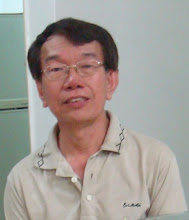In English, the passive voice does not take into account the persons in personal pronouns but in Malay it does.
For personal pronouns in the first and second person, there is one structure for it. The structure differs when personal pronouns in the third person are involved. To see what I mean, look at the examples given below.
1 Passive voice in the first and second person [Ayat pasif yang melibatkan kata ganti nama diri pertama dan kedua]
a) Saya akan membaca buku ini.(Active Voice – Ayat Aktif) [I will read this book.]
Buku ini akan saya baca. (Passive Voice – Ayat Pasif) [This book will be read by me.]
[Object + auxiliary word + first person + verb in the passive form]
b) Awak harus menghormati gurumu. .(Active Voice – Ayat Aktif) [You should respect your teacher.]
Gurumu harus awak hormati. (Passive Voice – Ayat Pasif) [Your teacher should be respected by you.]
[Object + auxiliary word + second person + verb in the passive form]
2 Passive voice in the third person [Ayat pasif yang melibatkan kata ganti nama diri ketiga
c) Mereka sudah membuat kerja itu. .(Active Voice – Ayat Aktif) [They have done the work.]
Kerja itu sudah dibuat oleh mereka. (Passive Voice – Ayat Pasif) [The work has been done by them.]
[Object + auxiliary word + verb in the passive form + oleh + third person]
PARAGIS
-
NO WONDER this grass went viral all over the social media. With its endless
health benefits, it is truly God’s gift to mankind. We can find this weed
almo...
4 years ago







No comments:
Post a Comment